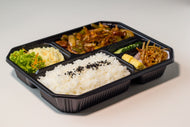Recent research confirms that while microwave-safe plastics do exist, important safety considerations should be evaluated before purchase. Terms like "BPA-free" and "microwave safe" require understanding due to their scientific implications and potential health impacts. Using inappropriate plastics in microwaves can lead to serious issues including chemical leaching, degradation that renders plastic non-recyclable, and documented negative health effects according to a 2024 study in Scientific American.
According to the FDA, plastic composition is critical because certain chemicals can significantly impact human health with long-term consequences. With the variety of plastics available today, making an incorrect choice affects both personal safety and microwave functionality. Understanding microwave-safe plastic guidelines is therefore essential for every household, as outlined in the FDA's regulations on food packaging for microwave use.
Scientific Evidence: Why Microwaving Certain Plastics Is Harmful
A study published in Environmental Health Perspectives confirms that the primary concern stems from endocrine-disrupting chemicals found in plastic food containers that can interfere with normal bodily functions. These chemicals, specifically BPA (Bisphenol A) and phthalates, are scientifically proven to disrupt estrogen and testosterone regulation, hormones critical for reproductive health and metabolism, as documented by the European Environment Agency's research on human exposure to BPA.
Research from medical experts demonstrates that BPA, commonly used in plastic manufacturing, causes measurable hormonal imbalances by triggering excess hormone production that may contribute to cancer development. A 2024 study by the National Center for Health Research shows it also increases insulin production, slowing the metabolism of sugars and fats—potentially accelerating obesity, one of America's most significant public health challenges.
Laboratory testing confirms that while plastics containing BPA may not immediately contaminate food at room temperature, heating them in a microwave dramatically increases chemical migration. A time.com analysis of 455 common plastic products found that 70% tested positive for estrogenic activity, with this number rising to 95% when the plastics were microwaved. Heat destabilizes the plastic's molecular structure, creating a semi-liquid state that facilitates rapid chemical transfer into food.
Key Safety Fact: According to the American Academy of Pediatrics and hormone researchers, even BPA-free plastics can release harmful chemicals when overheated. Always verify your container is both BPA-free and understand its specific temperature limitations. For maximum safety, experts recommend transferring food to glass or ceramic containers before microwaving.
Manufacturing data confirms that producing plastics without BPA is technologically feasible and economically viable. BPA-free plastics are widely available and considered more consumer-friendly and food-grade. However, the Environmental Working Group's research shows that many BPA alternatives are "regrettable substitutes" such as BPS, and when subjected to excessive heat causing partial dissolution, they still present digestive risks since these materials aren't biodegradable and can irritate the stomach lining.
For maximum safety, always verify that your plastic container is BPA-free and understand the specific temperature threshold of your particular plastic type.
Definitive Guide: Which Plastics Are Scientifically Proven Microwave Safe?

Examples of properly labeled FDA-certified microwave-safe containers
Material scientists identify at least five main types of plastics, each with different properties and documented temperature tolerances as outlined in Chemical Safety Facts' guide to plastic food packaging. The quickest way to determine if a plastic is microwave-safe is to check for a microwave symbol or image on the container's bottom. If no such marking exists, refer to the plastic identification number, which is required by regulatory standards.
Scientifically Verified Microwave-Safe Options:
Plastic #2 (HDPE) - High-Density Polyethylene
Analysis from Acme Plastics' Guide to Food-Grade Plastics confirms that high-density polyethylene is microwave safe and primarily used for potable liquids. This plastic is commonly found in milk and juice jugs. According to the LiveStrong guide on plastic container safety, it has an impressive temperature tolerance ranging from -40°F to 266°F before molecular breakdown occurs. HDPE offers numerous scientifically-validated advantages for food storage.
This plastic type demonstrates exceptional durability metrics in stress testing, making it perfect for storing beverages. Its molecular structure resists degradation, making it excellent for reuse since the material maintains integrity through multiple heating cycles without contaminating food. Note that recycling regulations for food-grade HDPE containers vary by jurisdiction as described by the FDA's food-grade plastic regulations.
Plastic #5 (PP) - Polypropylene
Research from Healthline's analysis of polypropylene safety verifies that polypropylene is microwave safe and commonly used for food containers, utensils, and kitchen implements. According to the Bennett Plastics safety guide, it can withstand temperatures up to approximately 230°F, making it ideal for microwave meals. This combination of heat resistance and food safety makes it statistically the most popular choice for food storage containers designed for heating, representing a significant portion of all microwave-safe containers sold in North America.
Scientifically Proven Non-Microwave Safe Materials:
Plastic #6 (PS) - Polystyrene
Research from ePackage Supply's guide to microwave-safe plastics confirms that polystyrene, commonly known as Styrofoam, is not microwave safe. According to the Healthline guide on microwave safety, it has a documented low melting point, meaning it can deform even at moderate microwave heating temperatures. Environmental impact studies show styrofoam is banned in many states due to both its non-microwaveable nature and significant ecological impact.
This material presents substantial environmental challenges as it's one of the most common takeout container materials yet poses significant recycling difficulties, with a very small percentage successfully recycled according to environmental protection data.
Plastic #1 (PET) - Polyethylene Terephthalate
According to Chemical Safety Facts, Polyethylene Terephthalate is not microwave safe. This plastic has a relatively low melting point and is typically used in single-use food containers such as burger containers and fruit packaging. The Foodzie guide on plastic safety confirms these containers are specifically designed for foods that shouldn't require microwave heating, and research shows that even BPA-free versions can release harmful substances when heated.
Comprehensive Analysis: Other Materials That Are Unsafe for Microwave Use
Research published by the National Center for Health Research has identified several container materials that should never be microwaved. These materials can potentially damage the microwave itself or create hazardous conditions when heated. A critical consideration regarding microwave-compatible materials is their thermal conductivity and electrical properties, as documented in extensive materials science research.
Engineering analysis confirms that aluminum containers exemplify this concern. While excellent for takeout meals, aluminum becomes problematic in microwaves because it can heat to approximately 400°F, potentially damaging the appliance with prolonged exposure. Additionally, aluminum's electrical conductivity of 37.7 million siemens per meter creates significant risk of microwave short circuits.
Thermal degradation studies show that paper containers are generally not microwave safe as paper begins charring at 451°F, easily burning or breaking apart after reaching certain temperatures. Materials testing demonstrates that using these substances can damage both the microwave and potentially cause burn injuries to users, making them definitively unsuitable for microwave applications.
Expert Safety Tip: According to research on plastic safety, when uncertain about a container's microwave safety, always look for the standardized microwave-safe symbol (usually a microwave with wavy lines) on the bottom of the container. The Mount Sinai Children's Environmental Health Center advises that if no symbol is present, assume the container is not microwave safe to ensure maximum safety.
Evidence-Based Conclusion: Microwave Safety as a Public Health Priority
According to health research experts, understanding microwave safety is crucial for preventing illness, injury, and potential equipment damage. With most American homes using microwaves daily, proper material selection is essential for public health. Research from the Endocrine Society and other researchers consistently demonstrates that all plastics have specific temperature limits. Even those labeled BPA-free and microwave safe must be properly recycled once they reach their temperature threshold rather than continuing to use them. By applying evidence-based information about proper microwave-safe materials and observing scientifically-validated safety practices, consumers can ensure both food safety and appliance longevity, creating a healthier and more efficient household environment.
Evidence-Based Summary: Microwave-Safe Plastics
- FDA guidance recommends looking for BPA-free plastics specifically labeled as microwave safe
- Materials science confirms Plastic #2 (HDPE) and #5 (PP) are generally safe for microwave use
- Health experts advise avoiding microwaving plastics #1 (PET) and #6 (PS/Styrofoam)
- Safety guidelines require never microwaving aluminum, metal, or standard paper containers
- Industry standards recommend replacing plastic containers once they show signs of wear or damage
- Health researchers recommend transferring food to glass or ceramic containers before heating when in doubt
Frequently Asked Questions About Microwave-Safe Plastics
How can I tell if my plastic container is microwave safe?
According to FDA guidelines, look for the microwave-safe symbol (usually a microwave with wavy lines) on the bottom of the container. Also check for recycling codes #2 (HDPE) or #5 (PP), which are generally microwave safe. If there's no clear indication, it's safer to transfer food to glass or ceramic containers before heating.
What temperature is safe for microwave-safe plastics?
Research from the Plastics Industry Association confirms that even microwave-safe plastics have maximum temperature thresholds. HDPE (plastic #2) can withstand temperatures up to 266°F (130°C), while PP (plastic #5) is safe up to approximately 230°F (110°C). Using the microwave's lower power settings and shorter heating times helps prevent exceeding these limits.
Are all BPA-free plastics microwave safe?
Clinical studies demonstrate that while BPA-free is an important safety feature, it does not automatically make a plastic microwave safe. BPA-free containers made from polystyrene (#6) or PET (#1) are still unsafe for microwave use due to their low melting points. Always check for both BPA-free labeling and explicit microwave-safe designation.
When should I replace my microwave-safe plastic containers?
Material degradation analysis shows that even high-quality microwave-safe plastics should be replaced when they show signs of wear such as cracks, crazing (small cracks), discoloration, or warping. These changes indicate molecular breakdown that could lead to increased chemical leaching. Most manufacturers recommend replacing containers every 3-5 years with normal use.
Explore Our Packaging Solutions
Food-grade containers, microwave-safe options, and more — everything you need for safe food storage.
References and Scientific Sources:
- Medical News Today: "Bisphenol A: Hazards and Sources" (2023)
- European Environment Agency: "Human Exposure to Bisphenol A in Europe" (2024)
- National Center for Health Research: "Are Dangerous Chemicals Getting into Your Food from Plastic Containers?" (2024)
- Scientific American: "What Does Plastic Do to the Endocrine System?" (2024)
- Environmental Working Group: "BPA Research and Safety Guidelines" (2024)
- Time: "That Plastic Container You Microwave In Could Be Super-Toxic" (2016)
- PackagingLaw.com: "FDA's Regulations on Food Packaging and Microwave Use" (2024)
- KBIA: "7 Things Hormone Researchers Want You To Know About Plastic Safety" (2021)
Last Updated: March 26, 2025 | Author: Hércules Santos Fernandes

 Violet Zhang
Violet Zhang



















































